Like this article?
Go on, give it a kudu!

Published on December 09 2021
Written by:
Sambell
6244 views
Despite UK television adverts, meerkats don’t have an uncanny ability to help people find good car insurance. They do have the phenomenal ability to stare directly into a bright sky to spot predators. They can also devour an entire scorpion and live to see another day. These resiliant mongoose family members prefer dry, open scrublands and savannahs and are found in southern Africa—from Angola to South Africa.
Although meerkats may look like they belong in the rodent family, they are one of 33 species that comprise the mongoose family. Adult meerkats average around 25-35 centimeters (10-14 inches) in length, not counting their tails. With their tails they can reach up to twice their body length. Meerkats weigh around 725 grams (1.6 pounds) and live in groups called mobs, gangs or clans as small as four individuals up to 40 meerkats.
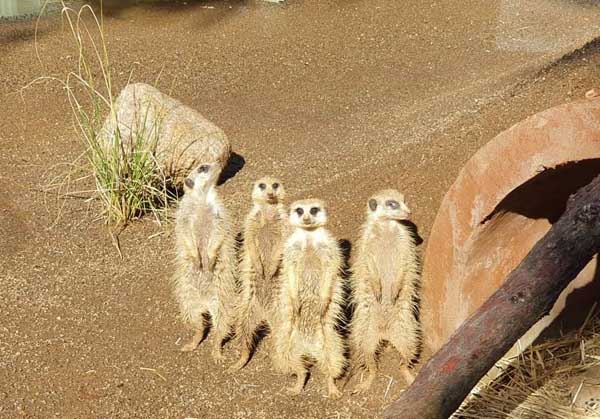
Each mob is dominated by an alpha male and alpha female pair which will do most of the breeding, and their offspring generally make up the remainder of the gang. A baby meerkat is called a pup. After a gestation period of 10-11 weeks, females normally give birth to three or four pups, but they can have up to eight. The lifespan of a meerkat in the wild is thought to be around eight years.
Meerkats are diurnal, which means they are active during daylight hours. They begin their day with the alpha female or male checking to ensure the coast is clear from predators. Once they’ve been given the all-clear, the clan will exit their burrows and possibly devote a bit of time to housekeeping—cleaning the burrows of any fecal matter that has been deposited in the toileting chamber and ensuring any sand that has fallen back into the burrow is cleared out.

They’ll then spend a few moments warming themselves in the morning sun. Although their coats are tan/grey, the skin on their bellies is black and readily absorbs the sun’s heat. Meerkats are social creatures, with many members of the clan given a role or responsibility. This is generally on a voluntary basis, with individuals taking turns in helping with these roles. Every mob has at least one sentry to watch guard over the burrows and other meerkats while they are out foraging.
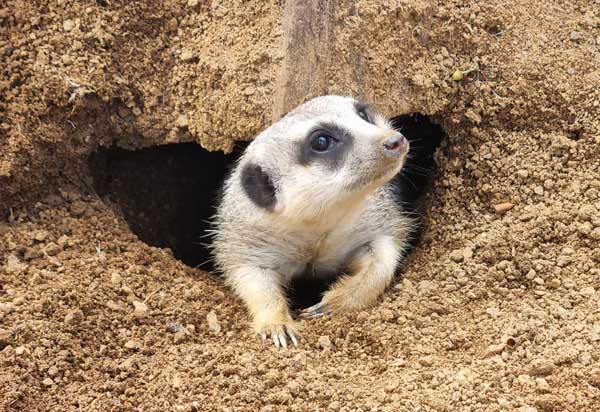
This is a vital role in keeping the clan safe. Meerkats have stereoscopic vision, giving them good depth perception, and can see great distances. Their horizonal pupils afford them a wide field of view with minimal head turning. The dark marks around their eyes reduce the sun’s glare and act a bit like sunglasses, allowing them to stare directly into the bright sky to spot aerial predators.
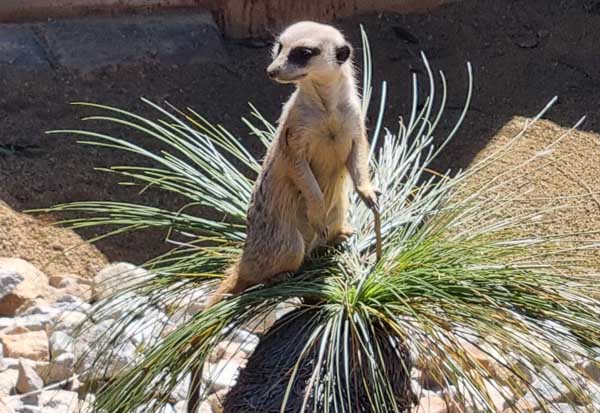
When a predator has been identified, the sentry will sound an alarm, a warning bark or screech, to alert the mob of impending dangers, so they can quickly run and hide.
Although classified as omnivorous, their diet is primarily carnivorous, consisting of insects, rodents, snakes, scorpions, eggs and the odd plant root. Their sense of smell is exceptional. When foraging, they can smell up to one meter underground and will dig deep to locate the food. Their non-retractable claws serve as efficient little shovels, which can move roughly 700 grams of earth in under a minute, making them formidable diggers. Meerkats possess a nictitating membrane—a sort of third eyelid—that is activated on every blink and keeps their eyes free of sand granules. Even their ears fold to keep dirt from entering!
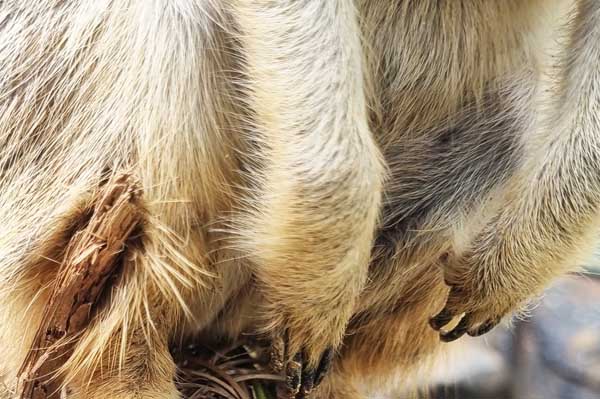
Meerkats have an immunity to some toxins, including scorpion venom, allowing them to eat the whole scorpion— everything from the pincers to the stinger. Like most mongoose species, meerkats eat snakes and are impervious to many snake toxins. Snakes can sometimes use a meerkat burrow to escape hot sun throughout the day. Once spotted, the intruder will be surrounded by meerkats, who will hiss and ‘dance’ in an attempt to scare off the snake. If bitten, a meerkat can become ill but normally will not die, due to their strong resistance to toxins.
Botswana is a good safari destination if you’re hoping to see meerkats. The Central Kalahari Game Reserve and Makgadikgadi Pans National Park are two arid safari destinations with meerkat populations. If you're lucky, the busy little critters will hang around while you watch them from your safari vehicle.
Has been on: 20 safaris
I am the type of traveler who wants to see and do as much of the world as I can. My main focus however, being an animal lover and a Zoo Keeper by trade, is wildlife of course. I have a very long list of species I wish to see in the wild and so far all my trips have ticked off at least 5 each time. I love travelling and getting to know the people of each country that I visit. There is something magical about meeting someone half way across the planet, that lives in a completely different world to mine here in Australia, it makes me so happy to get to know them and be apart of their world even just for a moment. From the USA, to all over Australasia, all the way up to Europe and of course Africa, I have been lucky enough to travel to over 20 countries in my life, and I plan to check off a whole heap more in the near future. Africa however is one place that does not disappoint at all when it comes to meeting such amazing people and seeing some of the most amazing wildlife in open spaces. I have visited the continent four times since 2006, two of which have been in 2018 and 2019. It is without doubt the one place in the world that has stolen my heart and soul and every visit makes it harder to leave. I have met so many people from different counties in Africa whom I still keep in contact with and have also caught up with over the years. I also had the opportunity to travel to Volunteer in South Africa in 2012 which I recommend for anyone who loves animals, wants to make a difference and really wants to see the real Africa. Basically, travel is my happy place!
© Your African Safari Ltd, All rights reserved.
Your African Safari is a safari-planning and safari review site. It was created to help support a healthy African wildlife population. All reviews are vetted before being approved and only ethical tours are published
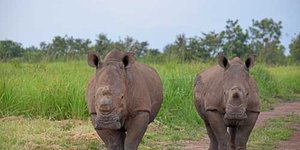
Garamba National Park—an anchor of hope in the Democratic Republic of Congo
Published on January 09 2025
By: R.W.

Namibia imposes new visa requirements
Published on July 25 2024
By: yourafricansafari.com

Do I really need travel insurance or travel protection for my safari?
Published on July 30 2024
By: yourafricansafari.com